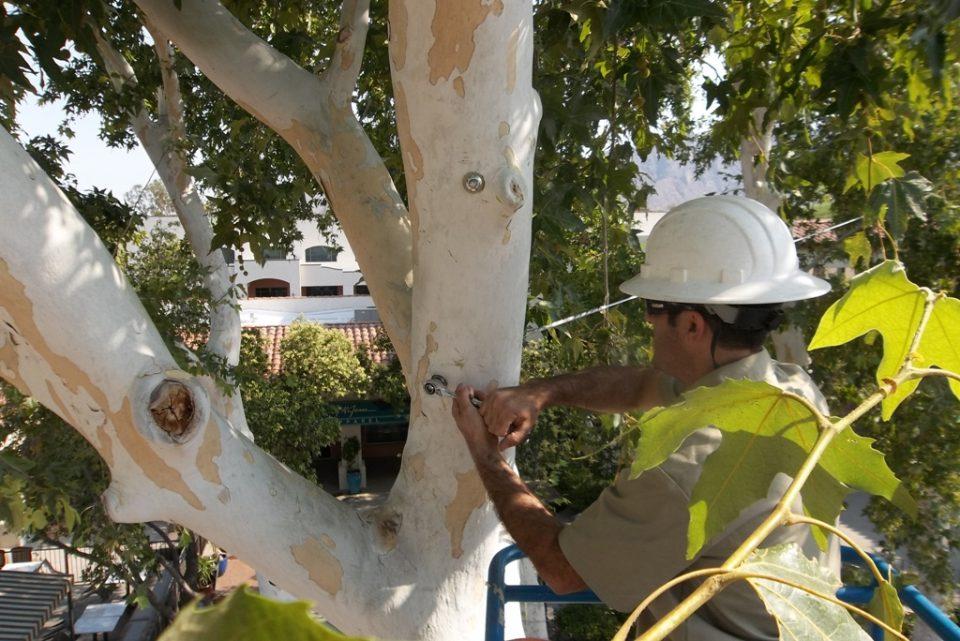
Tree Cabling and Bracing
Tree cabling and bracing are techniques that help support weak branches and prevent structural failure. These methods are essential for trees facing high winds, heavy rain, or other stresses common in our desert environment. Proper support can extend a tree's life, reduce safety risks, and preserve the natural beauty of your property. Whether you're protecting a beloved tree or addressing potential hazards, cabling and bracing provide a solution that works.
Understanding Tree Stability Issues
Trees are stunning natural assets, but they don’t always grow in perfect balance. Over time, environmental stress, poor growth patterns, or damage can leave parts of a tree vulnerable to collapse. For property owners in Tucson, recognizing when your tree might need support is crucial to prevent accidents or structural damage. Let’s break down the key signs of unstable trees and how Tucson’s unique climate plays a role in tree stability.
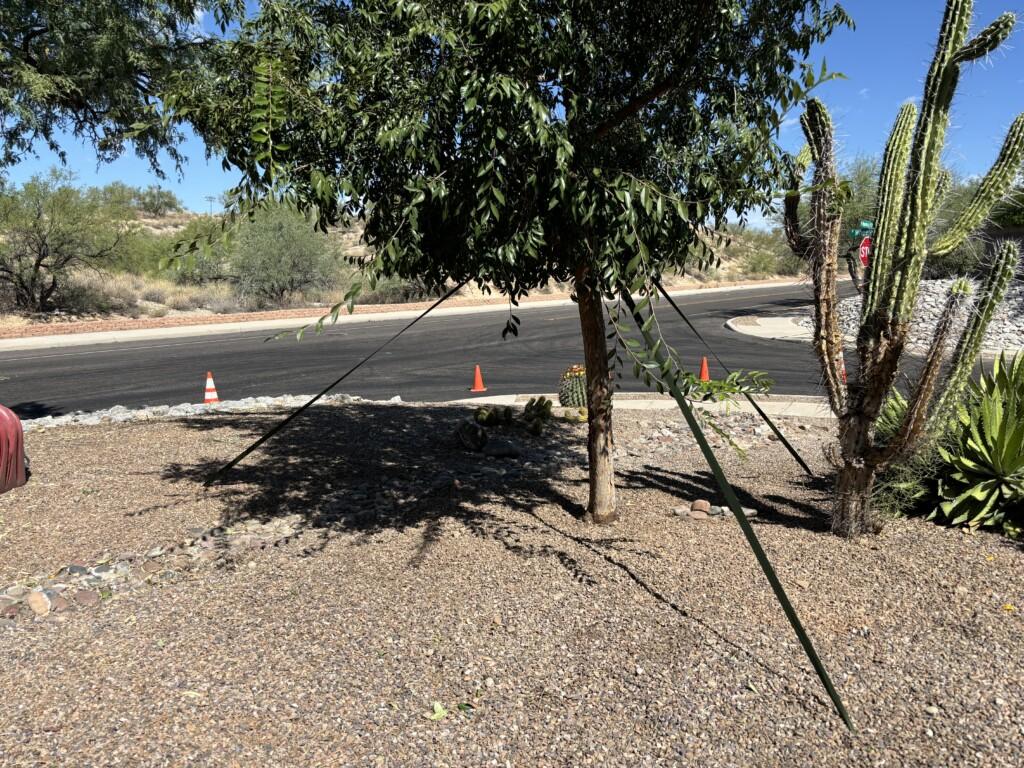
Signs a Tree Needs Cabling or Bracing
It’s not always obvious when a tree is struggling to support its own weight. However, there are clear, visible signs that a tree may require additional support. Look out for these common red flags:
- Split or Cracked Trunks: A visible split in the central trunk or large limbs signals that the tree is under stress. Without intervention, these splits can worsen, causing sections of the tree to fail.
- Leaning Branches: If large branches seem to pull downward unnaturally or lean unevenly to one side, it may indicate a structural imbalance. Left unaddressed, gravity and added weight (like from rain or high winds) may cause a break.
- Awkward or Unusual Growth Patterns: Trees sometimes grow in odd directions due to competition for sunlight or past pruning mistakes. This can lead to weak branch unions or limbs growing at sharp angles that can’t bear much weight.
- Excessive Swaying in Wind: If you notice a tree or its limbs moving excessively during windy days, it could mean internal weakness. Healthy trees should bend slightly but remain stable under pressure.
Identifying these signs early is the best way to safeguard against potential risks like broken limbs, falling branches, or even the tree uprooting entirely.
Let Us Help You!
Click the Button Below and Let's Get Started!!
How Tucson’s Climate Affects Tree Stability
Tucson’s climate presents unique challenges for tree stability. The combination of strong winds, seasonal monsoon storms, and arid conditions puts trees under constant pressure. Here’s how the local environment impacts their ability to stay upright:
- Monsoon Winds and Heavy Rain: Monsoon season is known for its unpredictable, often violent storms. These can quickly overwhelm trees, especially those with weakened limbs or shallow root systems. Rain-soaked soil also softens the ground, increasing the risk of uprooting.
- Prolonged Drought: Trees in dry climates like Tucson’s often grow shallow roots because deep soil moisture is scarce. Over time, this can limit their ability to anchor themselves securely, leaving them vulnerable when severe weather hits.
- Hot, Dry Air: The intense Arizona heat can sap the moisture from a tree’s wood, causing it to become brittle. Branches that might otherwise hold their shape can snap under weight or pressure.
- Soil Composition: Tucson’s native soil isn’t always tree-friendly. It’s often compacted and poor in nutrients, which impacts a tree’s ability to establish strong roots. This makes proper tree care and intervention even more important.
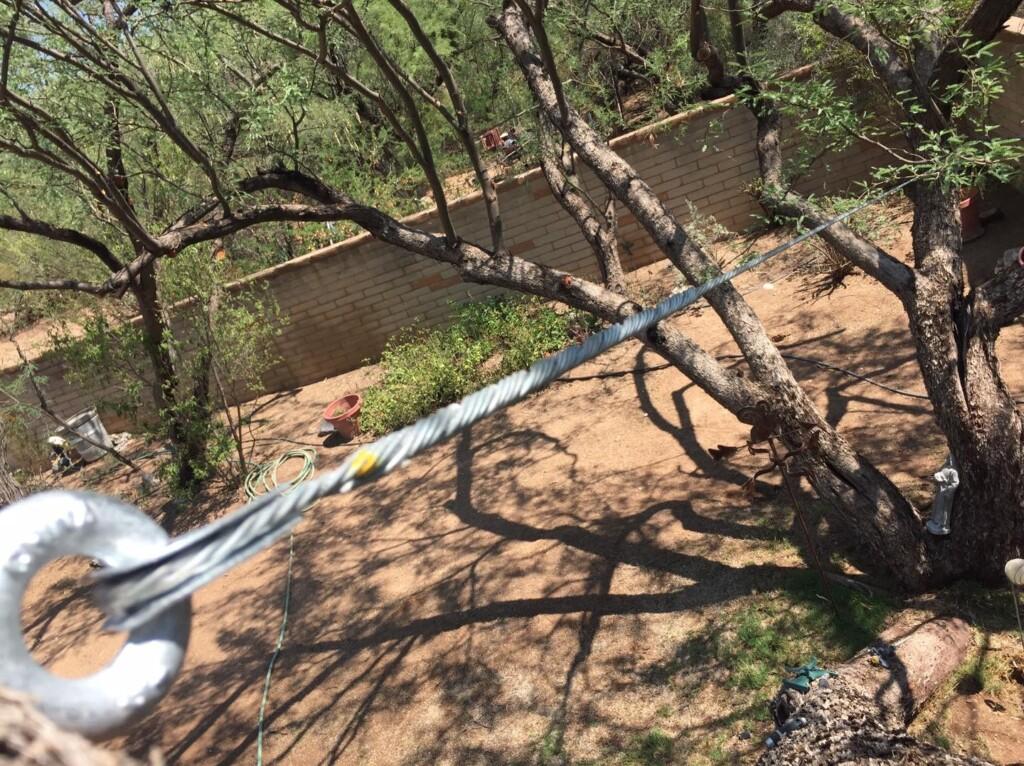
Understanding how these climate factors affect tree stability helps explain why cabling and bracing are often necessary in the Tucson area. These methods can address the effects of the desert’s harsh conditions, giving trees a fighting chance to thrive.
Prioritizing the warning signs and considering Tucson’s environmental challenges will help keep your trees safe and resilient. Keeping a watchful eye on their stability can make all the difference when the next storm heads your way.
Benefits of Cabling and Bracing for Tucson Trees
In Tucson, trees face a unique mix of challenges, from monsoon winds to prolonged drought. Cabling and bracing offer effective ways to address these issues, providing much-needed support for trees that might otherwise struggle. These techniques do more than just hold up branches—they protect your property, keep people safe, and promote healthier growth. Here's how cabling and bracing can make a difference.
Preventing Tree Removal
Sometimes, trees develop structural weaknesses that make them seem beyond saving. Cracked trunks, leaning branches, or awkward growth might lead you to think removal is the only option. But with cabling and bracing, that’s not always the case.
These methods can extend the life of a tree by reinforcing its weak points. Cabling prevents overburdened branches from breaking, while bracing strengthens cracked or split trunks. This reduces the need for drastic measures like cutting the tree down. If you have a tree that holds sentimental or ecological value, cabling and bracing offer an option to preserve it. Why remove a tree when it can be saved with the right support?
By strengthening the tree's structure, you’re not just saving the tree itself—you’re also keeping its shade, beauty, and environmental benefits intact. For Tucson residents who value their landscape, this is a major win.
Protecting Property and People
A falling branch—or worse, an entire tree—can cause serious damage, and Tucson weather doesn’t make it easy on trees. Strong monsoon winds can snap branches, while sudden rains can weaken roots or compromise stability. That’s where cabling and bracing are invaluable.
Cabling helps secure vulnerable limbs, keeping them from breaking under pressure. Whether it’s wind, rain, or weight from water-soaked leaves, cables reduce the likelihood of accidents. Bracing, on the other hand, prevents weakened trunks or branches from splitting further, locking them in place to avoid collapse.
Think of it as a safety net for your property. Whether you’re protecting a roof, car, or walkway, these techniques reduce the risk of damage during storms. And it’s not just about structures—your family and neighbors are safer, too. A secured tree means fewer hazards during extreme weather, giving you peace of mind when the next storm rolls through.
Let Us Help You!
Click the Button Below and Let's Get Started!!
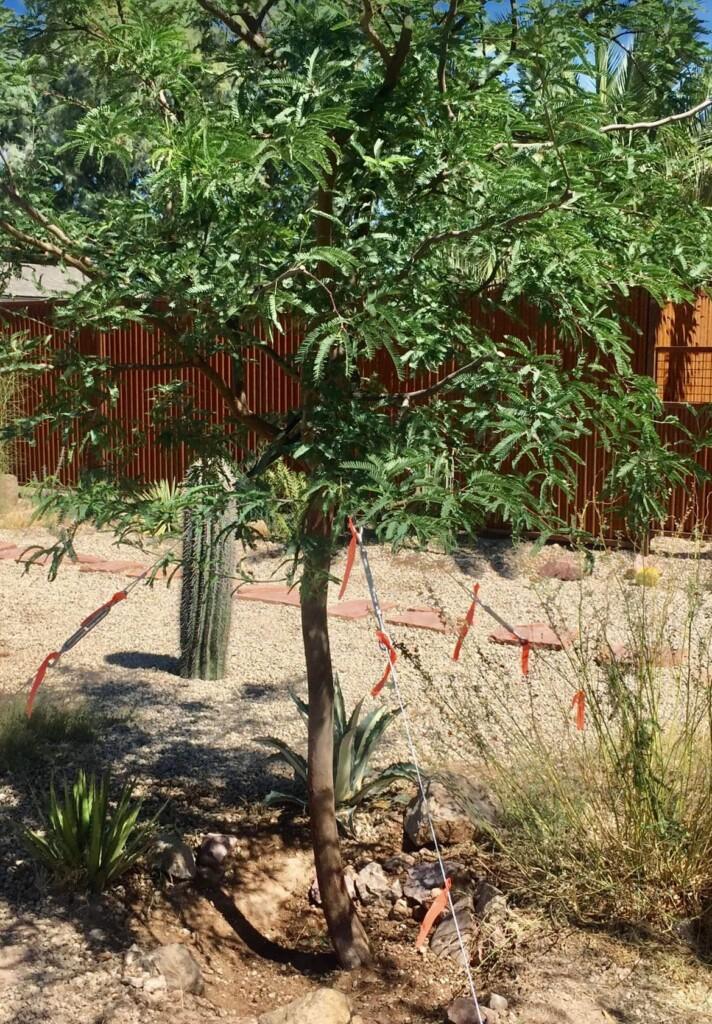
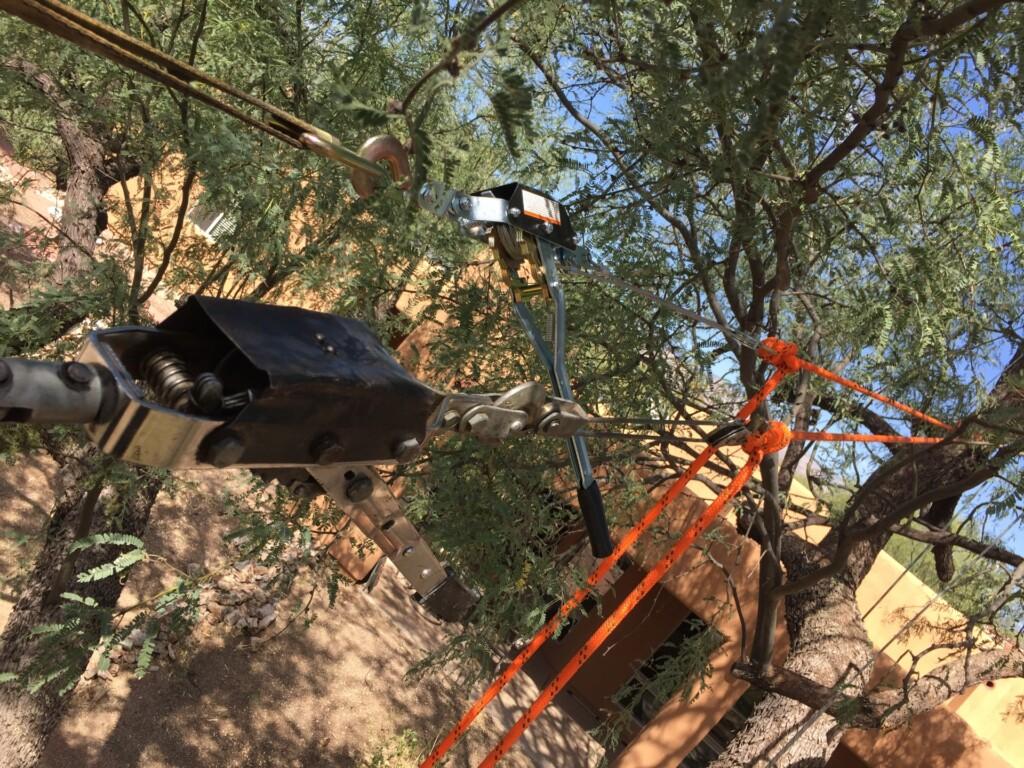
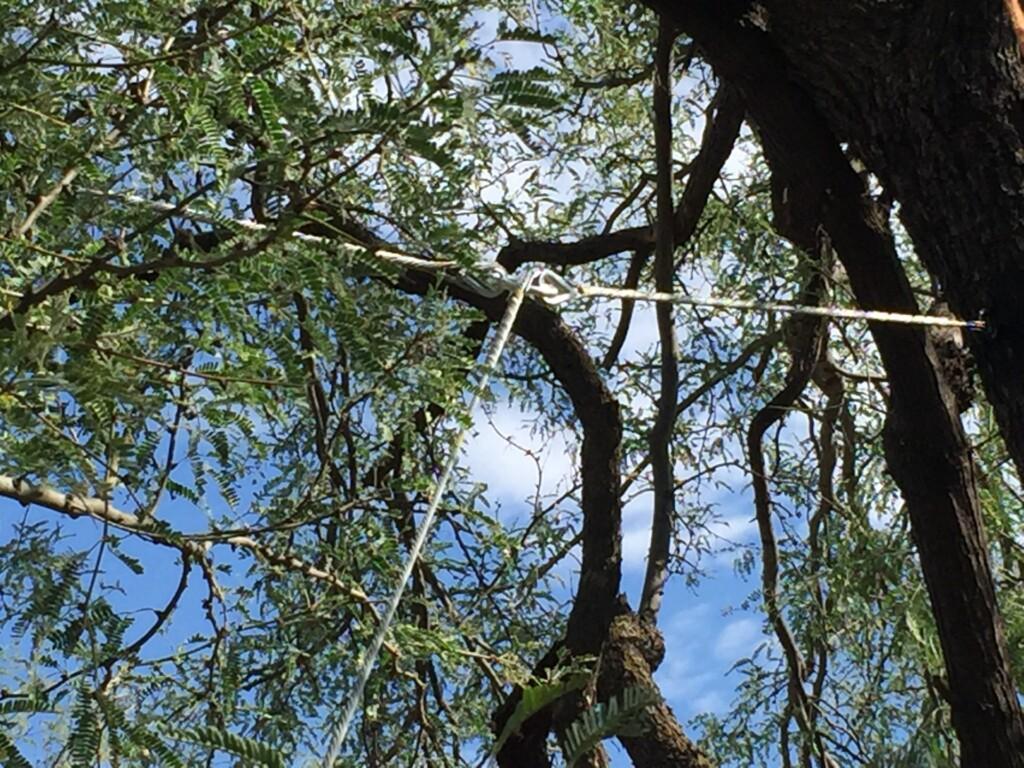
Improving Tree Health
Weak limbs and structural damage don’t only pose safety risks—they also affect the tree’s overall health. Cabling and bracing help trees regain their balance, allowing them to grow more sustainably over time.
When branches or trunks are under constant stress, the tree diverts energy to manage the strain. This can stunt growth, reduce leaf production, and leave the tree more vulnerable to pests and diseases. By using cabling and bracing to stabilize it, you’re helping the tree focus on healthy, natural development.
It’s like giving a tree physical therapy. The added support allows it to regain strength, grow properly, and thrive in Tucson’s tough climate. For trees dealing with stress from poor soil, intense heat, or drought, these techniques make all the difference.
Healthy trees aren’t just attractive—they’re more resilient. By improving their structure and reducing stress, you’re ensuring they’ll continue to thrive and provide shade, beauty, and clean air for years to come.
Cabling and bracing do more than fix problems—they offer a lifeline to trees struggling with Tucson’s challenges. Giving your trees this added support is an investment in their future and your peace of mind.
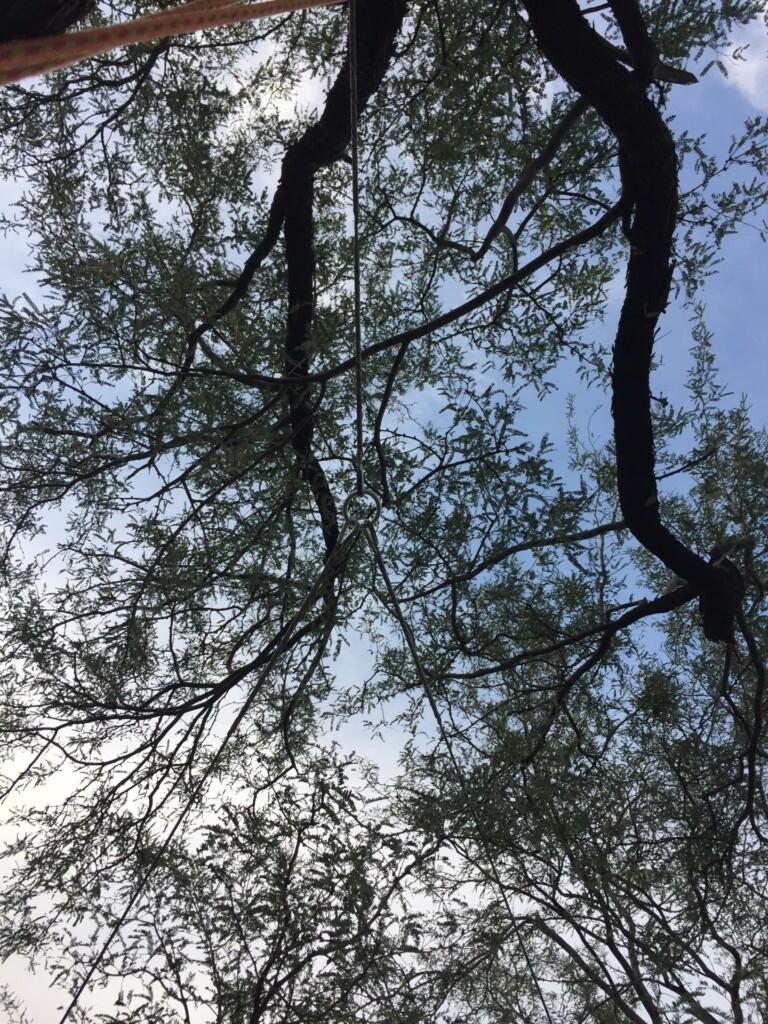
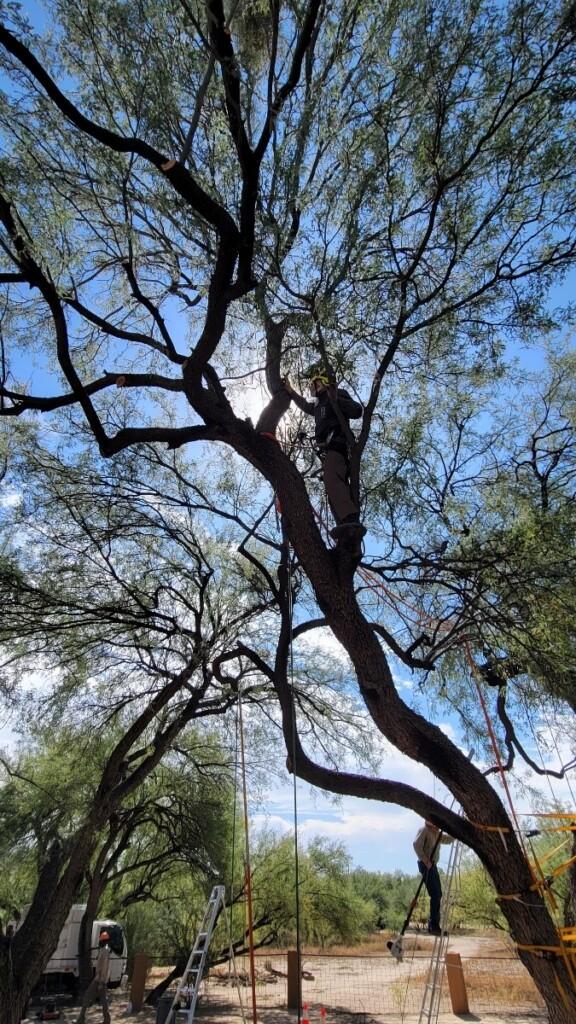
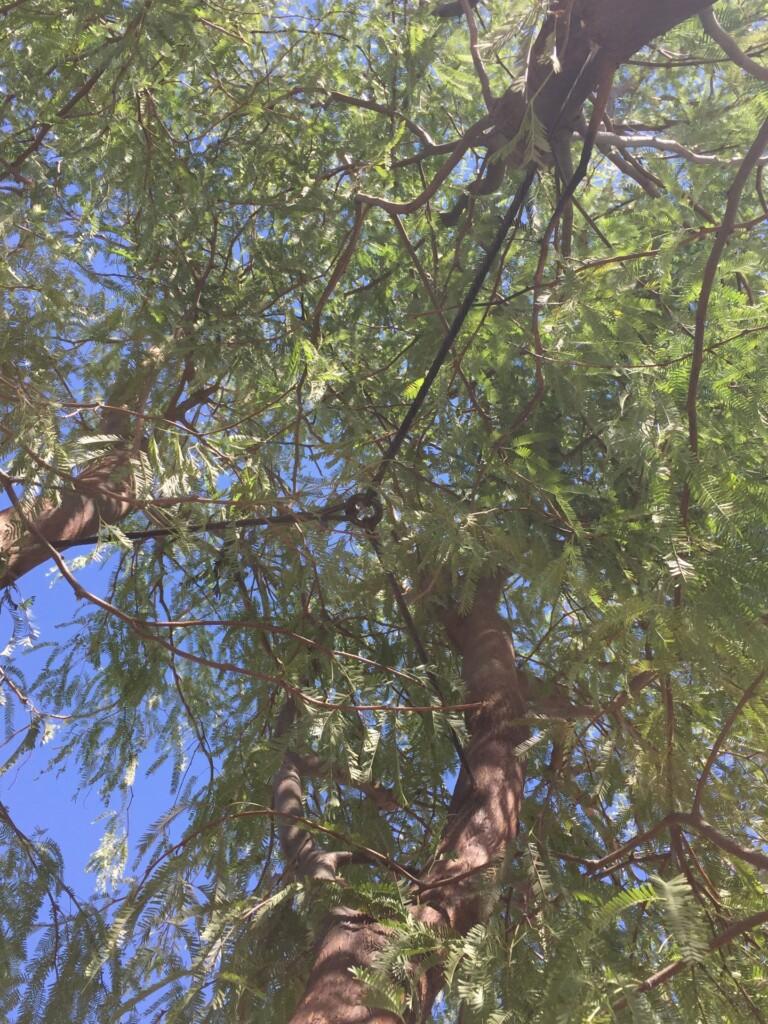
Let Us Help You!
Click the Button Below and Let's Get Started!!
Tree cabling and bracing can save Tucson trees from damage while protecting your property and loved ones. These techniques offer practical solutions for addressing weak branches, cracks, or stress caused by the local climate. Supporting your trees not only improves their health but also extends their life.
If you’ve noticed signs of instability in your trees, don’t wait for a problem to turn into a hazard. Reach out to Romeo Tree Service today to discuss cabling and bracing options. Your trees will thank you—and so will your yard.
